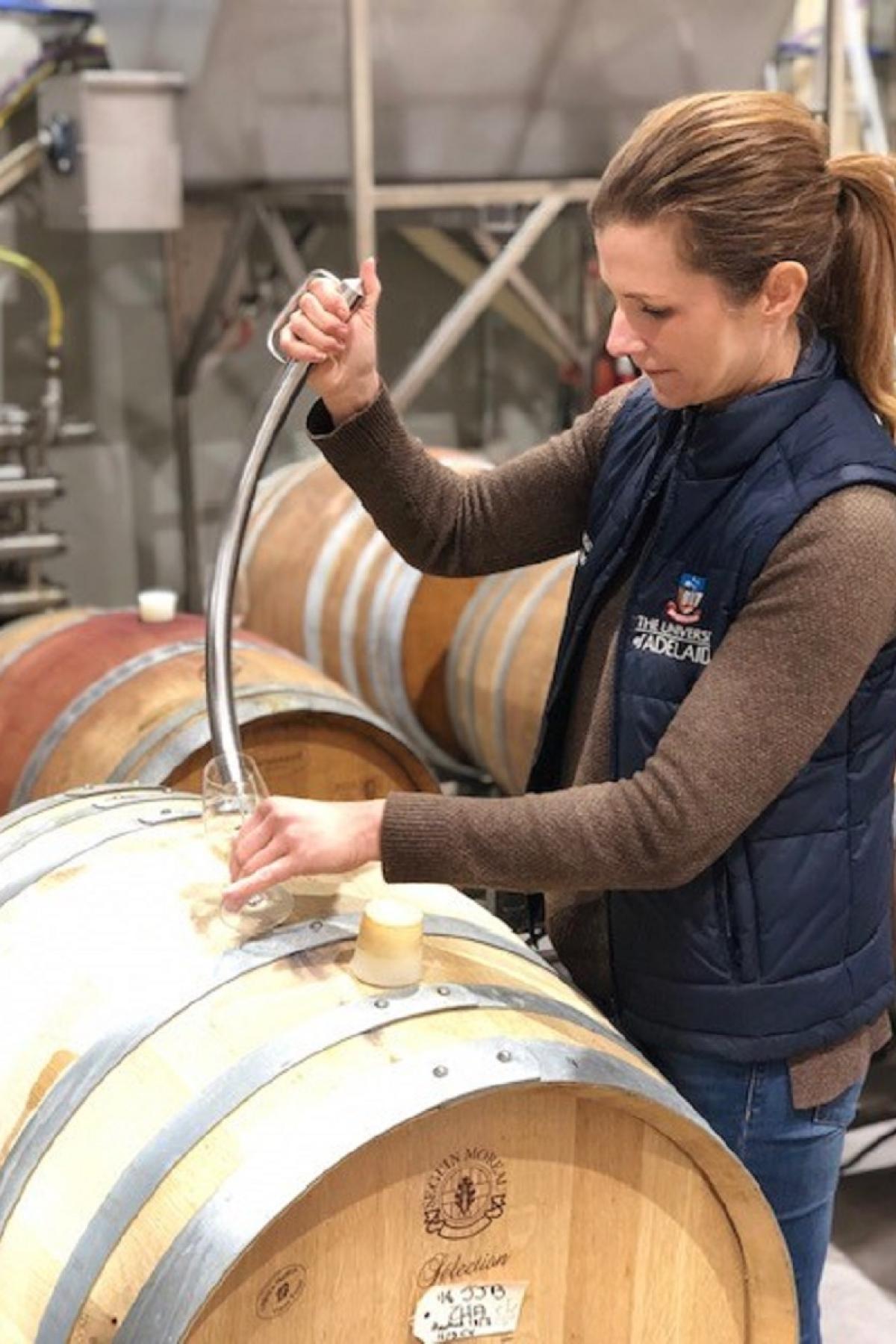This is how I teach
This month we spoke with Ms Jill Bauer, a Scholarly Teaching Fellow with the School of Agricultural Science. With a diverse 25-year career in the wine industry, Jill enjoys imparting her passion for wine science to her students.
Her innovative teaching approach, combining contemporary teaching methods and the use of the latest technology has recently been recognised through her shortlisting for a 2023 STEMM Educator of the Year award. Read on to discover how she creates a positive learning environment where students of all backgrounds are challenged to succeed.
How would you describe your approach to teaching/your teaching philosophy?
My philosophy of teaching encompasses open communication and collaboration with students, colleagues and industry. The foundation of this is a pedagogy of care, where mutual respect and authentic dialog are critical components to construct an engaged learning environment. The winery can present as an intimidating environment for students who have yet to experience commercial-scale machinery. It is challenging to persuade some less confident students to lean into their skill development. I lead by example in the winery, taking a hands-on approach in the cellar where I challenge students to dive into the work, and, armed with the science, to develop their personal approach to winemaking. Partnering with students in this way provides a safe environment for them to build confidence and take ownership of their knowledge.
Vintage is dynamic; we teach seven days a week between February and May. In this intense and condensed learning environment, I offer support, welcome consultation and enjoy the inevitable debate that wine inspires. The wine industry is ever-evolving, technologically and stylistically. There is no singular method to produce a beautiful wine. Layer this with season and weather that can derail the best laid plans. A perceived failure in winery decision-making can lead to the best learning outcomes, perhaps not the ideal wine, but experience in early issue identification and problem solving. I value relationships forged with students through these exchanges that spark inspiration for everyone.
What do you like most about teaching in your discipline?
The camaraderie with both colleagues and students, and the stunning resource that is the Waite Campus. The Discipline of Wine Science’s approach to grape-growing and fermentation science spans sensory, chemistry, microbiological and engineering platforms as well as the practical aspects, and art, of production. I am fortunate to teach into a program with a long history and bright future that contributes directly to South Australia’s global economic success. We are well-positioned as a discipline to equip our students with the knowledge and skills to become future leaders.
I believe our role as educators is not only to teach, but to develop and deliver well-rounded graduates to industry. Graduates who have a grounded, practical approach in not only the science of wine and viticulture, but the pertinent skills and resilience required by commercial wineries. I understand contemporary requirements for graduates and maintain a strong network of alumni globally to ensure our approach to teaching practical, hands-on winemaking delivers consistent, relevant, and sound material and establishes a strong foundation for students upon graduation.
How does your teaching help prepare students for their future?
Winemaking requires inquiry-based, team driven approaches. My teaching must reflect the requirement that graduates think laterally not only of wine science but also of sustainability, international trade and management.
Outreach is critical in my role. Collaboration with industry meets these challenges, and leads to successful outcomes for graduates. I find joy in connecting students and commercial wineries to ensure mutually positive outcomes. I actively engage with industry and invite winemakers into the winery to reinforce our position in shaping future leaders.

I consider Work Integrated Learning critical to instilling confidence and maturity in our students. I have introduced workshops to assist students with planning for their industry placement, facilitated extracurricular accreditations to increase job readiness, and brought speakers into the winery to discuss realities of commercial wine production from the relevance of mentors to gender diversity.
I initiated a series, Vintage Conversations. I invite alumni in for an honest discussion; a transition from the formal lecture. Students lead the ‘Conversation’ relevant to their concerns. The in-depth discussions encompass career pathways; transitioning to permanent winemaking positions; identifying mentors; and exposing gender biases. Multiple year levels blend in these events increasing the camaraderie among peers and strengthening social networks.
In 2019, I launched a Wine Alumni Network Facebook Group. The group has increased connection to winemakers globally and serves as a catalyst to employment for our students and graduates not only in winemaking but marketing and business. The group now hosts over 880 alumni members from multiple disciplines. I have been excited to witness the change to how industry interacts with current students and graduates.
What is your favourite way to use technology to enhance learning?
Through an LEI grant with A/P Beth Loveys, we developed, a series of videos ‘Flipping the Cellar Floor’ (FTCF) to support cellar and lab teaching. These videos, transcribed into Mandarin, build confidence for all students in developing critical skills independently. I implemented new curriculum material for all winemaking and fermentation technology courses. The goal of these curriculum changes and flipping the classroom approach in the winery all aimed at improving student outcomes and building confidence.
I co-lead a, now annual, review of the winery technology to identify gaps in our register that are required to teach advanced courses in winemaking. As a result of this analysis, we sourced state-of-the-art, commercial winemaking equipment. When funding was not available, I procured donations of InnoVint software (San Francisco, USA) and a Pulsair unit (Seattle, USA).
Our winery is now better equipped to teach students the novel approaches to fermentation management. Pulsair is largely new to the Australian winemaking landscape and our winery now presents an opportunity for our students to apply the novel technology to winemaking and research projects and to introduce it to industry.
